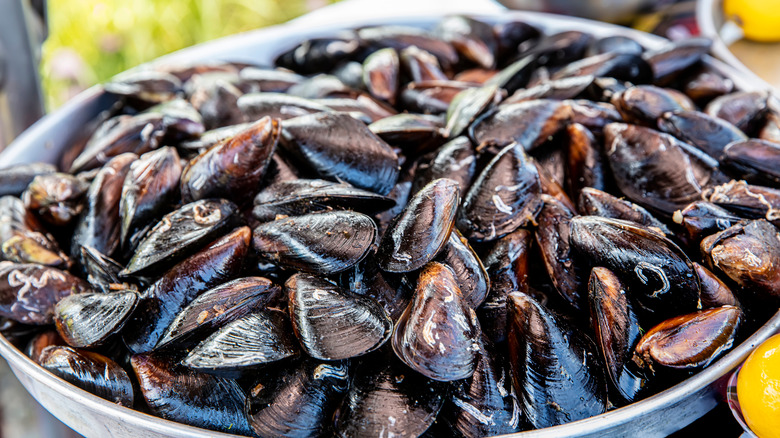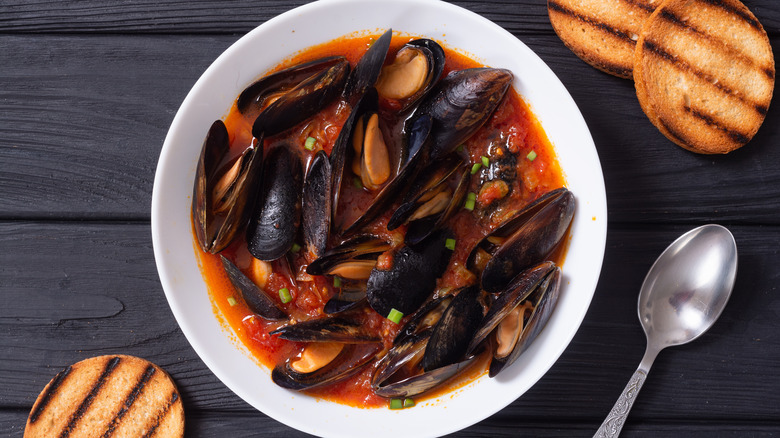You've Been Cleaning Mussels All Wrong
Seasoned at-home cooks and chefs alike know that there is power in the proper preparation of food. Whether it be cleaning up some of the ingredients, chopping, or marinating protein, undertaking some pre-cooking preparations can go a long way. There is no more important time to do this than when it comes to fresh seafood. Whether you've picked some fresh catch from your local fishmonger or got some shellfish, it is imperative that they be cleaned to ensure that you and your loved ones get the most out of the dish.
While cleaning fish has its own intricacies, shellfish like clams and mussels are somewhat different and easier to clean. Despite both being in shells, clams require slightly less effort to clean than their mussel counterpart. According to All Recipes, to clean out clams all you would need to do is soak them in fresh water for about 20 minutes (this lets them filter out all the sand and grit in them). Mussels, on the other hand, will require a smidge more elbow grease before they are ready to be cooked in that delicious wine sauce you found online.
Mussels need to be de-bearded and scrubbed
In a statement sent to Mashed, Top Chef All-Star and U.S. Ambassador for the Marine Stewardship Council, Gregory Gourdet, reveals that mussels require a bit more cleaning love than that of their clammy brethren. Epicurious notes that while many of the mussels you'll find in the store are farm-raised, and should for the most part be clean, you'll still want to give your mussels a nice little cleaning before you complete your ocean-to-table meal. You'll need to run your mussels under clean water, so that you can get some of the grime and sand out of them.
Gourdet says to scrub them well under cold water "to dislodge any grit and barnacles that may be clinging to their shells." Once you have scrubbed off any mud or barnacles and cleaned out the sand, you'll be left with the beards (Epicurious calls them "hair-like fibers" that sprout from the mussel). Gourdet details getting a firm grip on the respective mussel you are holding and "with the help of a paring knife for leverage ... yank them out." But, All Recipes notes that you must be strategic at this junction as you could risk killing the mussel and suggest pulling the fibers toward the hinge of the shell and pulling them out.

